Is Canada ready for a fiery future? We tallied up all of its water bomber planes to find out
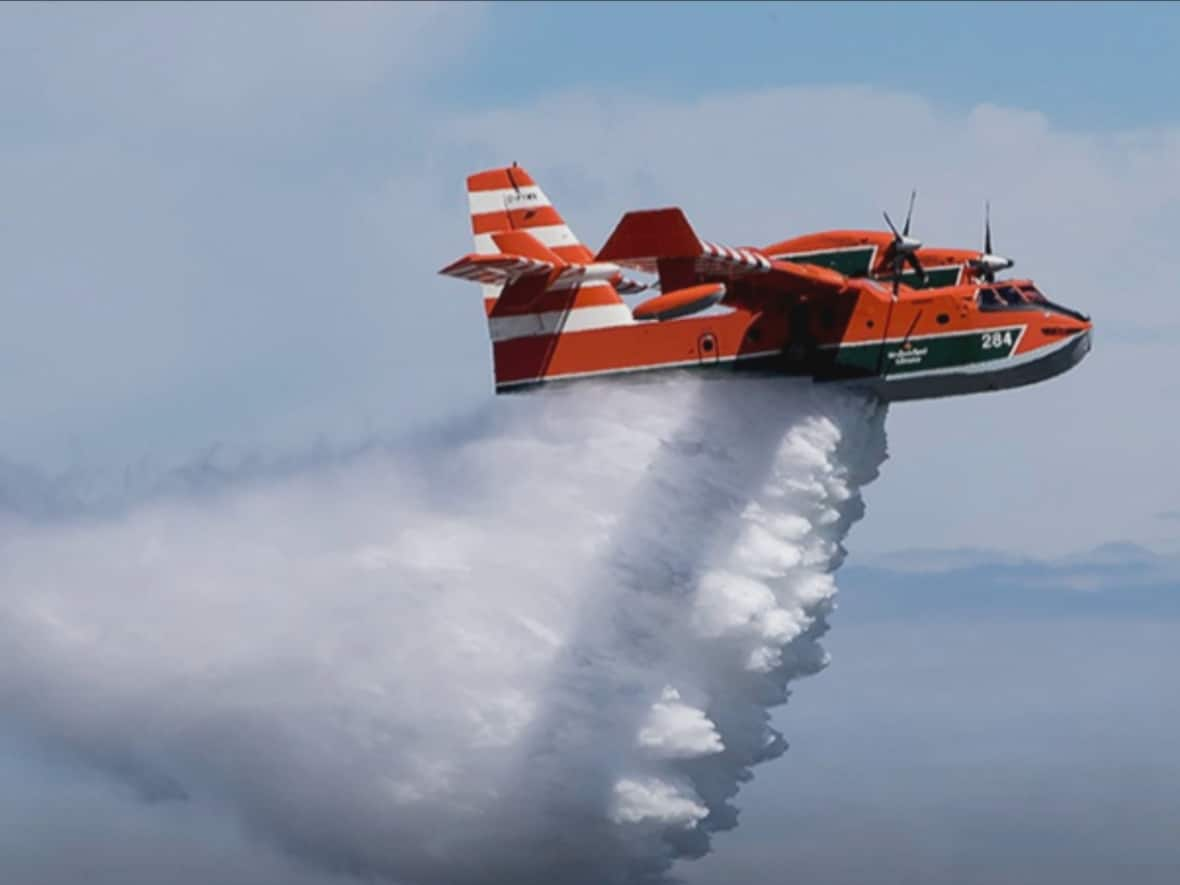
The worst Canadian wildfire season of the century has tested the country's airborne firefighting capacity, revealing that one of the most forested countries in the world may be ill-equipped to control fires raging simultaneously from coast to coast.
The country is likely to see more fire seasons like 2023. Climate changes means more unpredictable weather. Some summers could be unusually wet, while others are likely to be like this one — unusually dry and windy — the perfect wildfire recipe.
"What's the worst that could possibly happen? Double it," said Robert Gray, a Chilliwack, B.C., wildland fire ecologist.
Aviation and emergency preparedness experts say Canada's fleet of water bombers isn't ready for that, partly because the country's approach relies on sharing — both planes and firefighters — between provinces.
That arrangement doesn't work as well when fires are burning from east to west.
"It's not working this year and it's not going to work in the future, when we're likely to have multi-regions on fire … for longer periods of time," Gray said.
CBC News reached out to every province and territory to find out how many water bombers they have, their models and their age.
Water bombers, also known as air tankers, are a variety of planes that help attack fires by dropping water or retardant from the sky. They are a part of Canada's wildfire fighting force, along with firefighters on the ground.
The tally of water bombers in Canada's core fleet, not including those currently on loan from other countries or on short-term contracts, is around 106 that are considered "dispatch-ready" — airworthy and able to fly.
'We have an aging fleet'
Nova Scotia, Prince Edward Island and Nunavut, have no water bomber planes. P.E.I. and Nunavut's geography make wildfires unlikely, while Nova Scotia only owns water-bombing helicopters. The province recently needed to borrow planes from Newfoundland and Labrador to keep its fires at bay.
The rest of the provinces and territories either own their own fleet of planes, or contract them out through a third party. Some provinces, like Ontario, also reinforce their fleet with helicopters equipped with buckets.
Aviation analyst John Gradek looked over the information that CBC News was able to gather on the country's aerial firefighting resources.
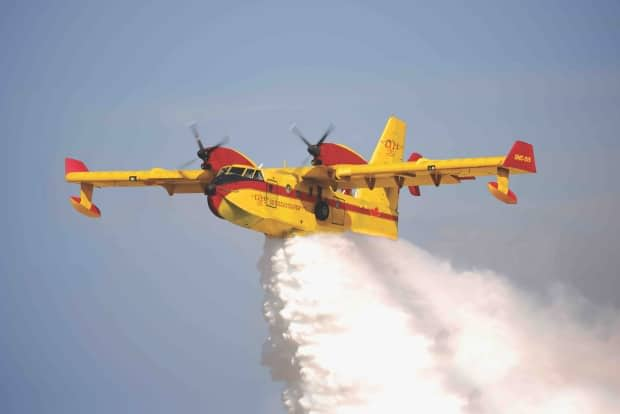
He said if 2023 is a taste of what's to come "we're in trouble."
Gradek says Canada has closer to 60 water bombers that he considers "quality" firefighting airplanes — high volume, high performance, fire-attack planes. He says the country needs to get about 40 more such water bombers over the next five to seven years to be prepared for what's to come.
"We have to invest in the fleet. We have an aging fleet," said Gradek, who is a lecturer and academic program co-ordinator in aviation management at McGill University in Montreal.
No new Canadairs until 2029 at least
Canadair water bombers — the CL-215 and the CL-415, a later model, are amphibious scooper planes used in half the country's fleets.
They have an international reputation as a tried-and-true aerial firefighting tool, but haven't been made since 2015.
Now De Havilland is preparing to build the next generation of Canadairs, the DHC-515 firefighter, at a plant planned for Calgary.
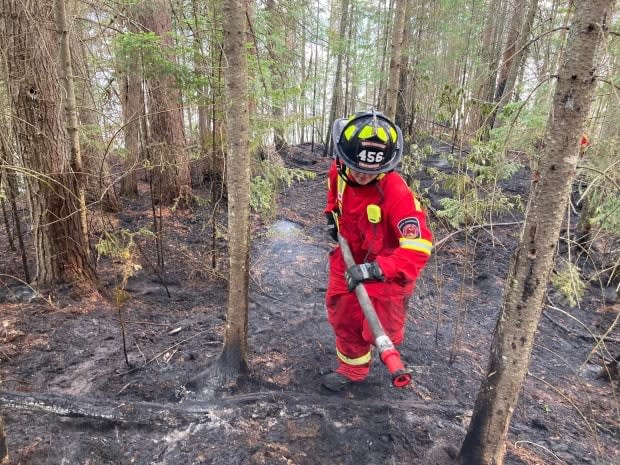
But if Canada wants to buy any, it will have to get in line.
Selling for tens of millions of dollars a piece, the first 24 DHC-515s are all promised to Europe. Assuming the plant gets built on time and everything goes according to plan, those planes will be ready for delivery around 2027.
De Havilland says the earliest any DHC-515s would be ready for Canadian customers would be around 2029 or 2030.
But so far, no provinces or territories have ordered any.
"Up until this year, I would say that Canada was probably pretty comfortable with the amount of aircraft that they had at their disposal," said Neil Sweeney, vice-president of corporate affairs for De Havilland Canada.
He says the Canadairs now used in Europe are older — some countries are still flying the first series of CL-215s that were produced more than 50 years ago.
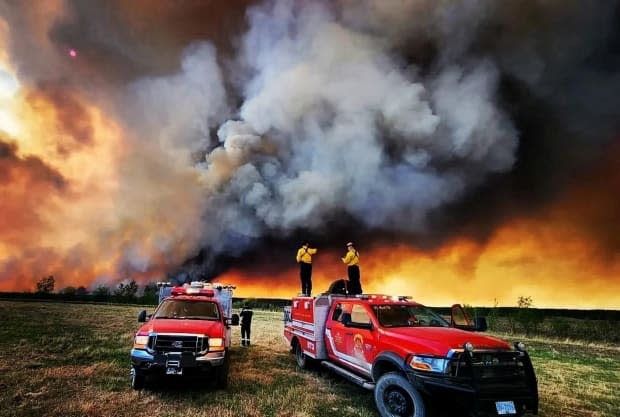
Some of the planes battling fires in Canada aren't much younger — Quebec has three CL-215s built 53 years ago and one built 37 years ago, and Manitoba has three that average around 40 years old.
Sweeney says those planes can continue to operate as long as they're properly maintained, though he acknowledged supply chain issues sometimes force planes to be grounded awaiting replacement parts.
It's part of the tradeoff that comes with an aging fleet, Gradek said.
"You can take my '57 Chevy and keep running it," he said. "But at a certain point in time, parts run out and so it gets more expensive to maintain. Do you spend money rebuilding and maintaining or do you trade it in for a 2023 Kia?"
In Gradek's view, provinces that still fly the original CL-215s should be thinking about replacing them in the short term, and replacing any 215Ts — a more recent model with turbo engines — in the medium term.
Time for a national fleet?
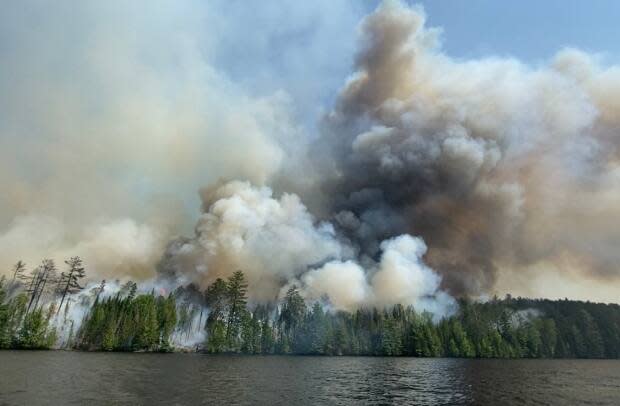
While wildfires are a provincial and territorial responsibility, Gradek recommends establishing a national fleet of water bombers.
It's an idea that's been raised before, one which Federal Minister of Emergency Preparedness Bill Blair didn't fully close the door on when asked by reporters this week.
Blair said Ottawa is looking for ways to offer support.
"We'll learn from our experience, and we will make future investments to make sure that Canada has the capacity to respond," he said.
Natural Resources Canada recently announced plans to hire, train and retain more firefighters, which builds on a $256 million investment over five years to help provinces and territories strengthen their fire management capacity — including capital expenses like purchasing aircraft.
Reinforcements would have been welcome in Quebec last week, which was caught short-handed during its early start to the fire season. As the province scrambled to bring in firefighting help from as far away as Portugal and Costa Rica, Premier François Legault lamented that Quebec "can't count on Ontario, Alberta [or] British Columbia because they have their own problems."
Planes from the U.S. and personnel from Chile and Spain have also joined the fight against the wildfires now burning across Canada.
The Canadian Interagency Forest Fire Centre (CIFFC) said in a 2022 report that Canada is likely to need more international help fighting future fires "as the needs anticipated will undoubtedly increase with climate change."
WATCH | Canada might not have enough water bombers:
Wildfire researcher Mike Flannigan says Canada should think about both creating a national fleet and investing in the DHC-515s. He says climate change will make it harder for Canada to call in its international partners for help.
"It's more likely [we will] see episodes where parts of the States are on fire at the same time we are on fire," said Flannigan, who specializes in emergency management and fire science Thompson Rivers University in British Columbia.
Gray, the ecologist, agrees.
"With climate change, to have us on fire and not have the U.S. on fire [will be] really unusual. They're going to look after their own first, just as we would," he said.
Flannigan says Canada can always go farther afield and ask the Southern Hemisphere for help, but that could take a week or two to arrive.
But aerial firefighting is just one piece of the puzzle when it comes to combating wildfires, and both Flannigan and Gray say Canada needs more resources across the board: more water bombers in the sky and more firefighters on the ground.
That, and more emphasis on prevention: fire bans and forest closures, and getting resources in place and ready to strike if the forecast calls for extreme fire weather.
Gray said Canada should be putting itself on a "war footing."
"There was talk that we didn't see this coming this year. Well, you shouldn't think in those terms," Gray said. "This could happen any year — and worse."


